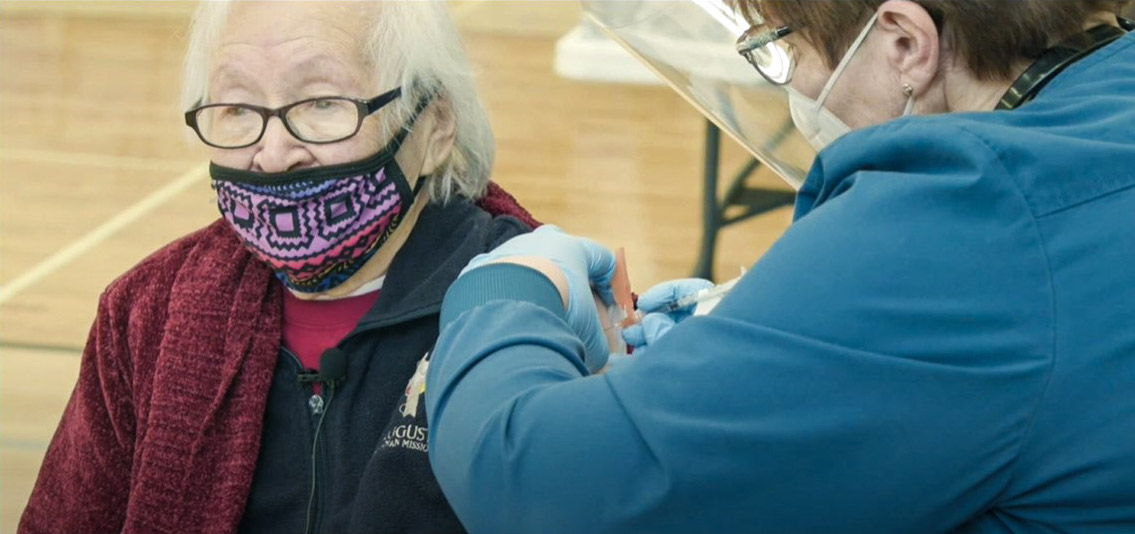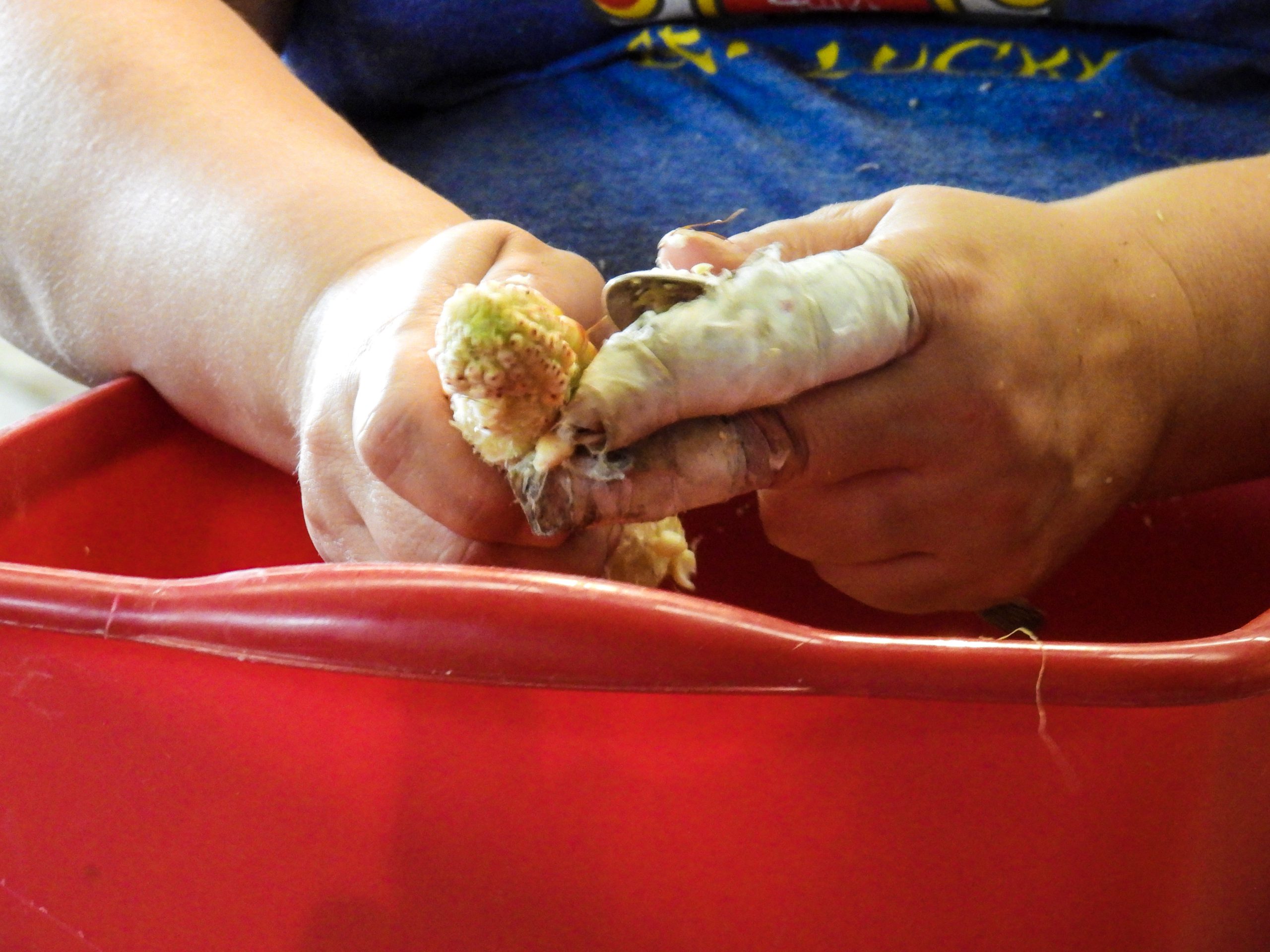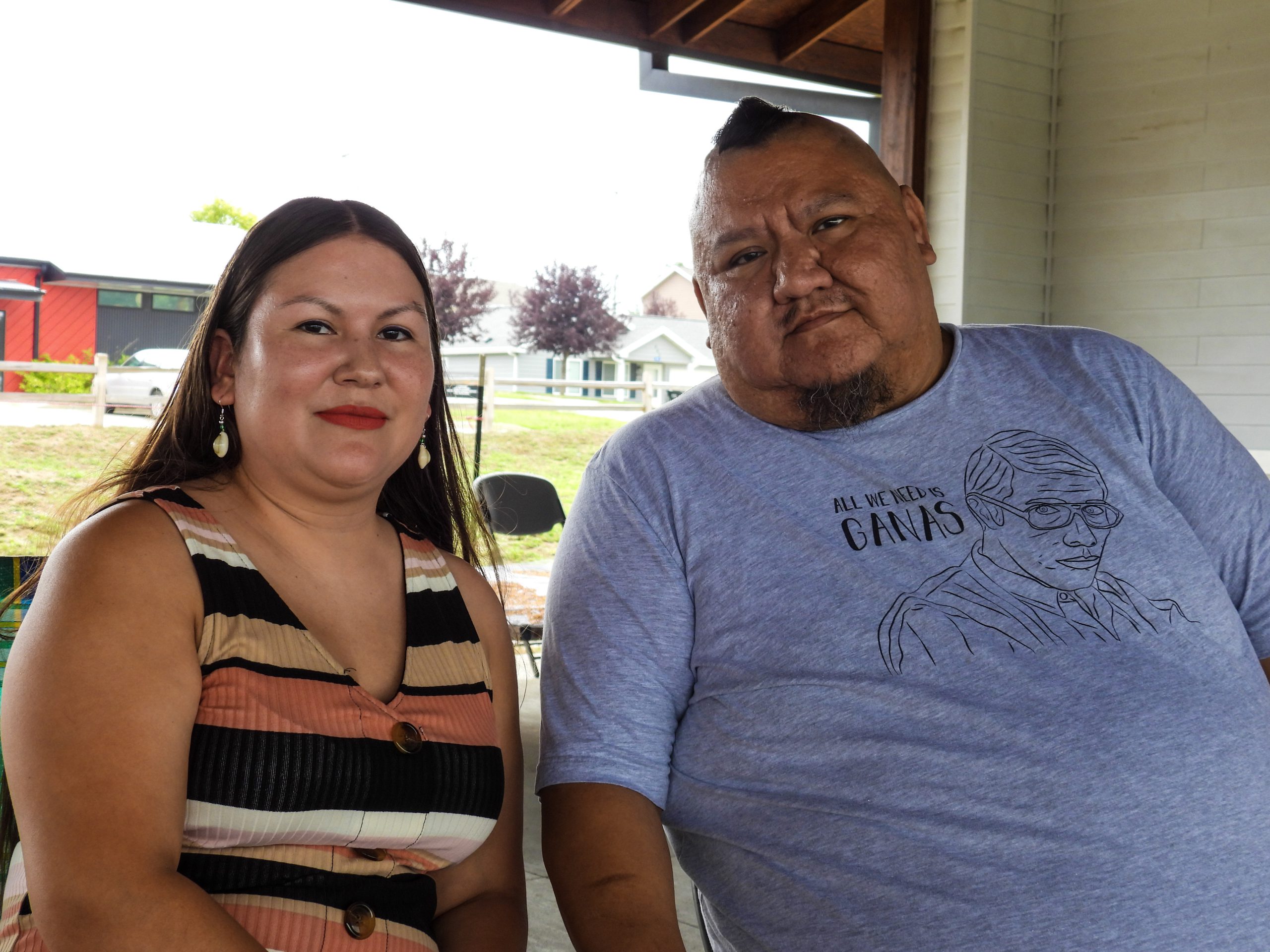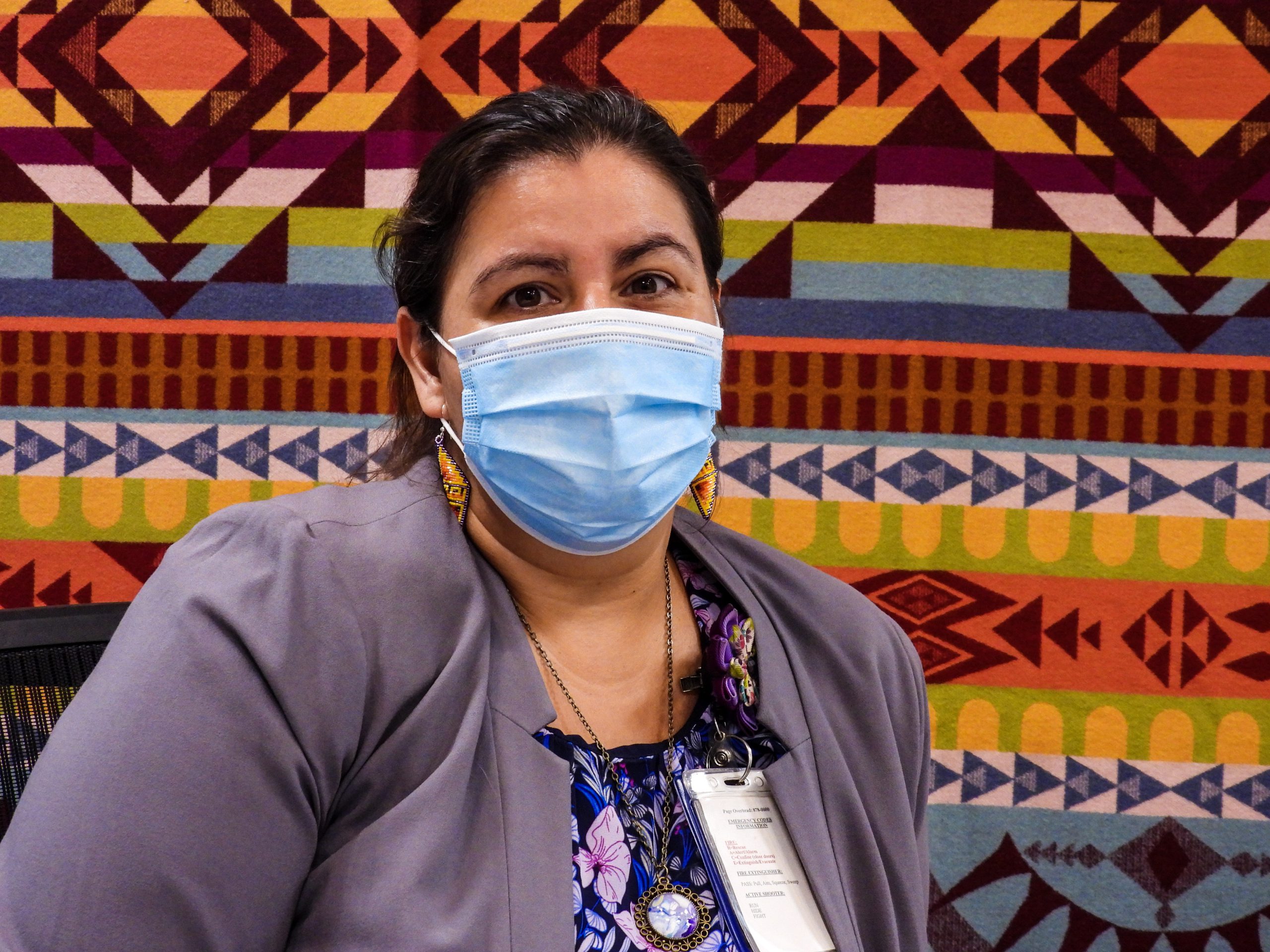Indianz.Com > News > Flatwater Free Press: Winnebago Tribe brings COVID-19 vaccine to community

Nebraska’s poorest county is also its most vaccinated. Here’s why.
Nearly three-quarters of eligible residents in tiny Thurston County have been vaccinated, beating even the metro counties of Douglas and Lancaster, which both have vaccinated roughly 70 percent of eligible residents.[/by]
Wednesday, October 20, 2021
Flatwater Free Press
WINNEBAGO, Nebraska — On a muggy August afternoon, members of the Winnebago Tribe in northeast Nebraska gathered to clean heritage corn and dry it for the coming winter. Some will be given to relatives. Some will be used in soup to warm tribal members when the Nebraska weather turns brutally cold.
This return to the normal rhythms of Winnebago life feels deeply satisfying to tribal members like Keely Purcell. A year ago, Purcell sat lonely in her Iowa living room, staying home, working hard to keep her immunocompromised husband and young children safe.
Now she’s cleaning corn in this shed and laughing with her friend Elaine Rice, who is like an auntie to her, a de facto relative in the way that tribe is family to many Indigenous people.
Purcell, Rice and many other tribal members feel comfortable in the shed for a simple reason: Nearly everyone here is vaccinated. As Nebraska struggles to get its rural residents vaccinated, Native Americans living in rural places here have gotten jabbed at extremely high rates.
Case in point: 76 percent of Winnebago Tribe members 12 and older are now fully vaccinated, according to the Twelve Clans Unity Hospital. The nearby Omaha Tribe has 75 percent of its eligible members fully vaxxed, including nearly every tribal employee, said Sarah Rowland, director of Macy’s Curtis Health Center.
Those numbers are markedly higher than the United States as a whole, and stunningly higher than any single other rural Nebraska spot. Most rural Nebraska communities have vaccinated between a third and a half of their eligible residents, according to Centers for Disease Control and Prevention data.
The vaccination push by the Winnebago and Omaha tribes, whose reservations border one another in rural northeast Nebraska, has led to an eye-opening fact: Tiny Thurston County, by far the poorest county in Nebraska, is also its most vaccinated.
Nearly three-quarters of eligible residents have been vaccinated there as of October 6, beating even the metro counties of Douglas and Lancaster, which both have vaccinated roughly 70 percent of eligible residents.
An inborn sense of community and family, as well as an intensely local education push, have driven large numbers of tribal members to embrace the vaccines.
“When smallpox came around, we didn’t have anything to protect us. We didn’t know,” Purcell said, referencing the virus that killed as many as 90 percent of Native Americans in the decades after traders and settlers brought it here. “But, this time, in the middle of all this, knowing that the virus could kill our people, we have a vaccine. Take it.”



Tim Trudell is a freelance writer based in Omaha and an enrolled member of the Santee Dakota Tribe. Trudell has co-written three books with his wife Lisa. Together they run a travel blog, thewalkingtourists.com. Trudell has also written for outlets such as The Omaha World-Herald, Omaha Magazine, Nebraska Magazine and Living Here Midwest.
The Flatwater Free Press is Nebraska’s first independent, nonprofit newsroom focused on investigations and feature stories that matter. This story is published here under a Creative Commons license (CC BY-NC-ND 4.0).
Search
Filed Under
Tags
More Headlines
Urban Indian health leaders attend President Trump’s first address to Congress
‘Mr. Secretary, Why are you silent?’: Interior Department cuts impact Indian Country
Cronkite News: Two Spirit Powwow brings community together for celebration
Native America Calling: Native shows and Native content to watch
VIDEO: Oversight Hearing to Examine Native Communities’ Priorities for the 119th Congress
AUDIO: Oversight Hearing to Examine Native Communities’ Priorities for the 119th Congress
AUDIO: Leaving Indian Children Behind: Reviewing the State of BIE Schools
Cronkite News: Native student program shuts down due to President Trump
NAFOA: 5 Things You Need to Know this Week (March 3, 2025)
Filmmaker Julian Brave NoiseCat makes history at Academy Award ceremony
Senate Committee on Indian Affairs schedules business meeting to consider bills
Chuck Hoskin: Cherokee Nation advocates for Indian Country
Native America Calling: Native education advocates assess the new political landscape
AUDIO: American Indian and Alaska Native Public Witness Hearing Day 3
Native America Calling: The Trump administration, endangered fish and a new book
More Headlines
‘Mr. Secretary, Why are you silent?’: Interior Department cuts impact Indian Country
Cronkite News: Two Spirit Powwow brings community together for celebration
Native America Calling: Native shows and Native content to watch
VIDEO: Oversight Hearing to Examine Native Communities’ Priorities for the 119th Congress
AUDIO: Oversight Hearing to Examine Native Communities’ Priorities for the 119th Congress
AUDIO: Leaving Indian Children Behind: Reviewing the State of BIE Schools
Cronkite News: Native student program shuts down due to President Trump
NAFOA: 5 Things You Need to Know this Week (March 3, 2025)
Filmmaker Julian Brave NoiseCat makes history at Academy Award ceremony
Senate Committee on Indian Affairs schedules business meeting to consider bills
Chuck Hoskin: Cherokee Nation advocates for Indian Country
Native America Calling: Native education advocates assess the new political landscape
AUDIO: American Indian and Alaska Native Public Witness Hearing Day 3
Native America Calling: The Trump administration, endangered fish and a new book
More Headlines